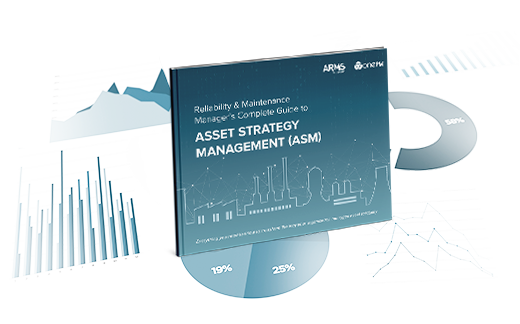The contribution of asset performance to meeting the financial goals of an asset intensive business is clear.
In the age of connected devices and assets, and with machine learning and AI gaining momentum, it is surprising that organizations are still unclear if they are performing the appropriate amount of routine maintenance on their assets.
The concept of asset maintenance optimization is simple; perform technically feasible maintenance at the interval which minimizes costs. Perform the maintenance too often, and costs increase due to over-maintaining. Perform the maintenance too infrequently, and the costs increase due to failures caused by under-maintaining.
It is common for asset managers to be challenged by their executives to reduce maintenance costs whilst maximizing asset performance. Conceptually it sounds simple, minimize routine maintenance that is not adding value, and prevent the unplanned failures that are occurring.
This high-level view is also what is likely driving the over application of asset health and asset condition monitoring programs, with the allure of AI-based interventions. Conceptually of course, to monitor an asset and only respond once degradation or performance deviation is detected, makes sense. So much so, that some organizations have approached this with a view of it being the totality of their asset care approach.
Practically though, there are some limitations:
- Basic asset care still needs to be in place since currently the connected technologies cannot monitor for all known failure modes. So, the absence of the basic principles of asset care, create exposure to unplanned failure risk.
- In the absence of basic asset care, asset life can also be reduced. The monitoring may pick up the degradation and prevent unplanned failure, however the aim is to get maximum life from our assets such that total cost of ownership is minimized.
- From a logistics perspective, we have set maintenance crews, tools, and equipment. As such, maintenance must be planned as best as possible to smooth the resource requirements and reduce the cost to execute. In a world where we react to monitoring, the organization is exposed to potential increases in cost through uneven resource requirements and times of peak resource requirements at relatively short notice.
- Connecting operations plans to asset care windows is also a critical element in minimizing cost of maintenance. If the plant is on a 12-week shut down cycle which aligns to their operational goals and product requirements, then adherence to this schedule is key. If we determine some degradation and need to take an asset offline to conduct corrective maintenance, there is significant decision making required to ensure operational plans are maintained. Do we bring forward a plant shut? Do we do a short stop? In either case, what other corrective maintenance or routine maintenance should be conducted at the same time?
It is clear then, that minimizing maintenance costs and maximizing asset performance is achieved through a balanced approach of basic asset care and routine maintenance coupled more advanced asset health and condition monitoring.
There is significant opportunity to standardize and optimize our basic asset care and routine maintenance. Financially optimizing routine maintenance is surprisingly quick and simple, with the application of the right techniques and technology.
Fundamentally, we take the sound principles of RCM, and utilize simulation or analytical techniques to optimize the maintenance intervals, considering asset characteristics and specific operating context.
Additionally, there is an opportunity to utilize generic content, which can be a reasonable starting point for the RCM structure. For most assets, there are detailed Failure Mode and Effect structures available, some with typical maintenance tasks included. Generic content can be quickly modified and customized to allow for variations and account for different operational or environmental conditions.
To create usable models for financially optimized routine maintenance we must follow these key concepts of RCM:
- Functional based
- Failure modes and tasks being technically feasible
- Understand the characteristics of failure
For each given instance of the asset, the likelihood of failure can be updated to reflect the asset installation, the environment, and the operational context. The effects of failure can be quantified, along with specifying the corrective maintenance costs.
Simulation or analytical methods can then be used to assess the total costs when conducting the maintenance at a specific interval. If this is repeated for several intervals, then a plot can be created to compare the total costs for different intervals. This plot can be used to determine the optimal interval to conduct the maintenance.
This method should consider all relevant elements:
- Routine maintenance costs
- Corrective maintenance costs
- Failure costs, including consequential asset damage and any production or business impacts.
- All materials and resource costs
- Effectiveness of the routine maintenance
Currently, available technology makes this rapid and automatic. Once the models are built, the analysis can be conducted automatically and periodically.
The whole point here, is that routine maintenance must be optimized on an ongoing basis. With so many input variables, it is not hard to see how quickly the decision may need to change. Routine maintenance, and the associated interval, may need to change as operations change, asset duty changes, assets age, new technologies become available, schedules change, material change, product changes etc.
Best in class financially optimized maintenance programs install this review as a process, it is ongoing and continuous. It is not a periodic review, conducted by a project team, but an ongoing process, or reliability-based alignment of routine maintenance to operational goals, given the current operating environment and asset condition.


